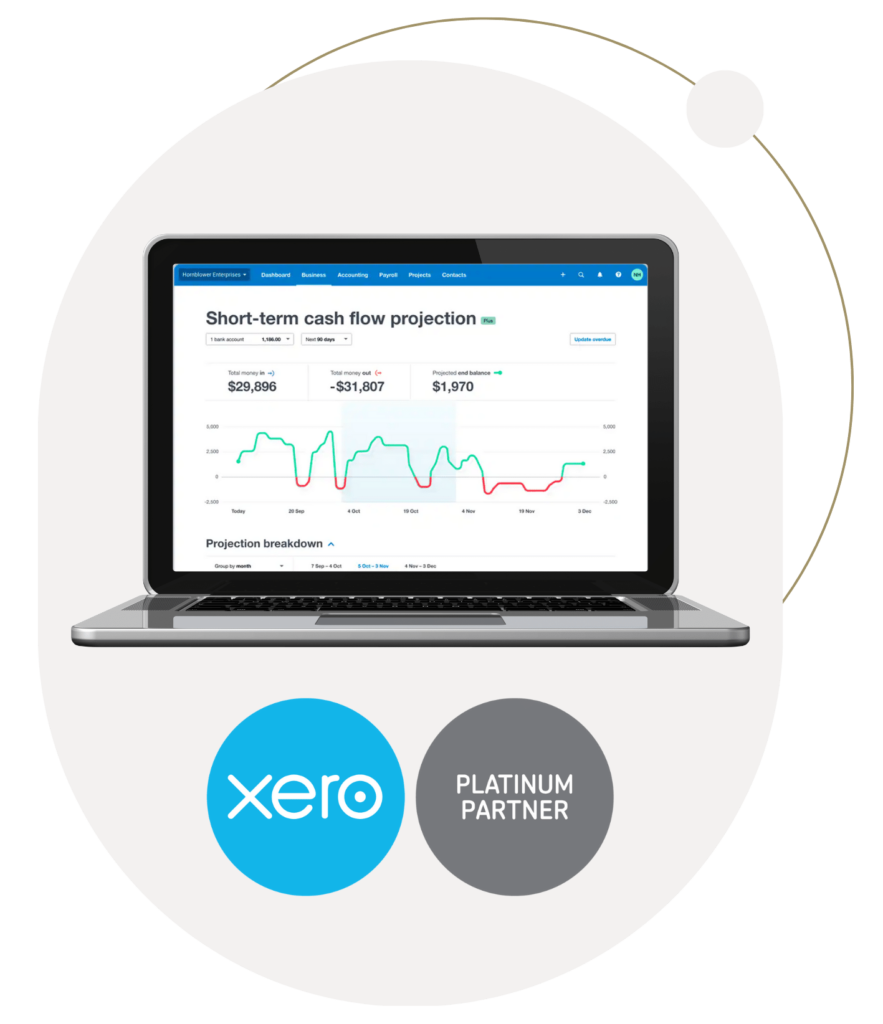Accounting + Taxation | Software
Xero’s short-term cash flow feature for businesses
Better insights on the cash you have.

The MB+M team bring you the latest update on Xero’ short-term cash flow feature for businesses. This will provide you with a consolidated view of where your cash flow stands.
Business cash flow is simply money coming in and money going out of the business. Your outgoings will include things like rent, payroll, taxes and supplies. Your income will be revenue from sales but might also include investment funds or the sale of assets.
For most businesses, income and expenditure don’t always happen at the same time so focusing on strong financial management will help you prepare for the shortfalls and also manage surplus income.
Cash flow reports allow you to visually look back at your small businesses financial situation and project where you are likely to be in the future. This can uncover cash patterns over time and show you how much money you need to run your business each month.
Cash flow forecasts look forward by combining payment dates and due dates for invoices, to give you an idea of what your situation might be like in the future.
Managing healthy cash flow
Xero’s short-term cash flow feature gives you an up-to-date dashboard view of your organisation’s finances. You can choose multiple bank accounts and see the projected cash flow over 7-30 days. The more information you include, the more accurate your forecast will be.
Healthy cash flow management gives you better control, so you are more prepared for growth or for the unexpected.
Xero’s cash flow dashboard explained
The Short-term cash flow feature is a dashboard style tool designed to help you view and manage your cash flow better.
You can choose multiple bank accounts to see what the projected balance will be in 7 days or 30 days.
It’s calculated entirely on the Xero balance of the nominated bank account/s and the upcoming bills and invoices that are entered into Xero. The information is more accurate when overdue invoices and bills have been paid and reconciled in Xero.
By updating expected or planned dates you’ll see the impact of delaying paying a bill and know which invoices need to be followed up on again. This will help improve your cash flow for the month.
This feature, however, won’t display the currency of an invoice. The dashboard shows all foreign currency invoices in the organisations’ base currency. Click on the invoice to see more detail about it.
Reimbursable expense claims will display on the dashboard, but payroll and credit notes won’t.
If you have complex forecasting needs, one of Xero’s add-on partners may have a product better suited for your business. Xero’s App Marketplace (Xero.com website) has a wide range of cash flow applications you can use to integrate with your Xero account.
Who can access your dashboard?
- Anyone with the Adviser user role within your organisation. This includes your accountant or bookkeeper if they set up Xero for you, or if you’ve invited them into your organisation.
- Anyone with the Standard user role within your organisation.
View your Short-term cash flow
To use the tool:
- In the Business menu, select Short-term cash flow.
- Under Bank accounts included, select one or more bank accounts.
- Under Projection applies to, select Next 7 days or Next 30 days.
- Click Show projection.
- When the dashboard appears, you can change bank accounts and the projection date from the dashboard.
- (Optional) You can group Invoices owed to you and Bills to pay by contact or date.
- (Optional) On the dashboard complete any Suggested actions so your projections are as accurate as possible.
MB+M have a team of experts ready to help you and your business make the change to cloud accounting. If you are interested in finding out how cloud accounting can help you, call to speak to one of our team on 03 5821 9177.
Still wanting more? 5 reasons you should change to cloud-based accounting software
Published 29 August 2022.
The information provided in this article is general in nature only and does not constitute financial advice.